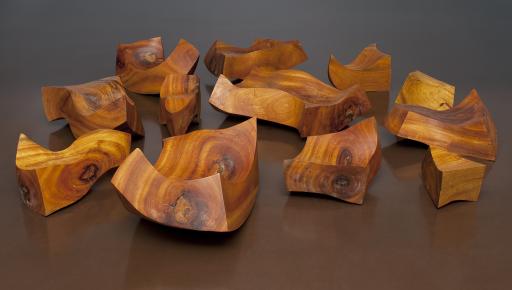Dancing on the Field, 大倉侍郎 Ōkura Jirō
Artwork Overview
大倉侍郎 Ōkura Jirō, artist
1942–2014
Dancing on the Field,
1978
Where object was made: North and Central America
Material/technique: camphor wood; carving
Credit line: Gift of the artist
Accession number: 2014.0057.a-l
Not on display
If you wish to reproduce this image, please submit an image request


